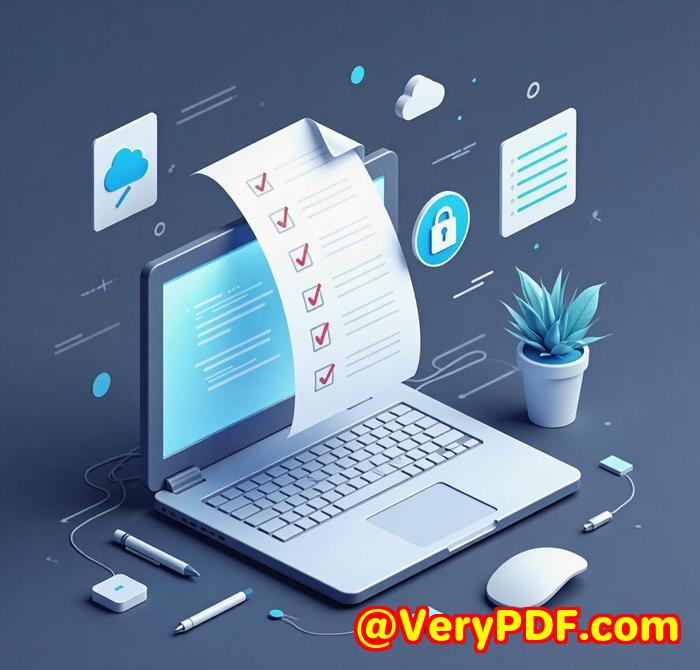Title
VeryPDF vs Locklizard vs Vitrium: Which PDF DRM Tool Actually Works Best?
Meta Description
A real-world comparison of VeryPDF, Locklizard, and Vitrium PDF DRM toolswhat works, what doesn’t, and who wins for serious document protection.

Every time we shared a confidential PDF, I worried it’d end up on Reddit…
We’ve all been there. That sinking feeling when you send out a sensitive PDFwhether it’s a business proposal, a financial report, or a legal docand you know there’s nothing stopping someone from forwarding it, screenshotting it, or dumping it online.
I’ve tried basic password protection, file expiration plugins, even Google Drive permissions… but none of it stopped screenshots or leaks.
So I went down the rabbit hole of PDF DRM tools. I tested three big names: VeryPDF, Locklizard, and Vitrium.
Here’s what I foundno fluff, no jargon, just what actually worked for my team and me.
What even is PDF DRMand who really needs it?
PDF DRM (Digital Rights Management) is like putting a bouncer in front of your PDFone that not only checks IDs but decides who can open the file, for how long, on which device, and whether they can print or screenshot it.
This matters a LOT if you’re in:
-
Publishing (ebooks, whitepapers, training manuals)
-
Finance (reports, investor decks)
-
Legal (contracts, case files)
-
Corporate training (internal manuals, compliance docs)
-
Agencies & freelancers (client deliverables, design drafts)
In short: if your documents are valuable and you don’t want them shared without control, PDF DRM is your insurance policy.
The Breakdown: VeryPDF vs Locklizard vs Vitrium
1. VeryPDF DRM Protector
Features that matter:
-
No passwords or certificates (huge!)
-
Block copy, edit, printing, and screenshots (yep, even Print Screen)
-
Set document expiry (by date or number of views/prints)
-
Revoke access anytime
-
Watermarking (dynamic or permanent)
-
Lock files to device, USB, or browser access (zero install)
-
Offline viewing supported (your users don’t need Wi-Fi to open docs)
How I use it:
When we send pitch decks to clients, I:
-
Allow 1 view
-
Disable printing
-
Watermark with their email
-
Expire the file after 48 hours
This has saved us from so many awkward conversations when decks got leaked or mysteriously “reshared.”
Why it wins:
-
Super granular control
-
Easy to use (cloud-based)
-
No bloaty install files
-
Works even on USB or browsersmassive flexibility
2. Locklizard
What they offer:
-
Strong encryption and licensing system
-
Locks files to specific devices
-
Offline access enabled
-
Watermarks + print limits
-
Requires their viewer to open files
My experience:
I used Locklizard for a week. Setup was… rough. Every user had to download a proprietary viewer. Not a dealbreaker, but I lost a few clients who didn’t want to install anything.
Also, the UI felt dated. Fine if you’re an IT admin, but not great for fast-moving teams.
The friction:
-
Desktop app needed
-
Tech setup takes longer
-
Not great UX for clients or readers
3. Vitrium
The good:
-
Great analytics & tracking
-
Strong protection policies
-
Cloud-based
-
Custom user permissions
Where it fell short:
I loved the idea of Vitrium, but it didn’t block screenshots. That was a dealbreaker for me.
Also, pricing wasn’t startup-friendly. Felt more like an enterprise tool with all the bells and whistles… even if you didn’t need ’em.
Best for:
Big teams with IT support and a focus on document analytics over lockdown security.
Why I stuck with VeryPDF
I chose VeryPDF because:
-
It just worked. No downloads, no client resistance.
-
I could lock a PDF to a browser or USB stick instantly.
-
It blocked screenshots reliably (huge win).
-
Pricing was reasonableespecially for small teams or agencies.
The control I get is unreal:
-
I can expire files after 3 views
-
Lock to one device
-
Watermark every page with recipient info (they won’t leak it now)
My favourite feature? Remote revocation. One client shared a PDF against policyI yanked access in 10 seconds. No drama.
The bottom line
VeryPDF solved the biggest headaches we had with document sharing.
No more password juggling. No more wondering who printed what. Just full control.
I’d highly recommend VeryPDF to any team that:
-
Shares sensitive documents
-
Works with external clients
-
Wants PDF security without annoying their users
Want to test it yourself?
Start your free trial here and take control of your docs today.
FAQ
1. Can VeryPDF block screenshots on all devices?
Yes. It blocks Print Screen and common screen grab tools on both Windows and macOS.
2. Do recipients need to install software to view protected PDFs?
Nope. You can enable browser-based viewing or lock to USBno installation needed.
3. Can I revoke access to a PDF after it’s been sent?
Absolutely. One click, and it’s gone. They won’t be able to open it again.
4. What’s the difference between VeryPDF and Locklizard?
VeryPDF is easier to set up, doesn’t require viewer software, and blocks screenshots more reliably. Locklizard is more enterprise-heavy.
5. Is VeryPDF suitable for small businesses or freelancers?
Totally. It’s cost-effective, and you can scale as you grow.
Tags: PDF DRM software, Protect PDF from screenshots, Expire PDF files, Secure document sharing, VeryPDF vs Locklizard
Keyword: PDF DRM tools (used in title, intro, and closing)